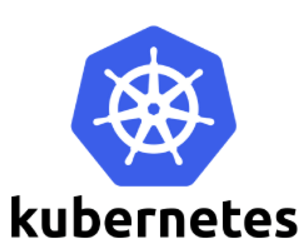How To Install Kubernetes on Fedora 39

In this tutorial, we will show you how to install Kubernetes on Fedora 39. Kubernetes, the cornerstone of container orchestration, has revolutionized the way we deploy, scale, and manage containerized applications. Its versatility and robustness make it a preferred choice for developers and system administrators alike.
This article assumes you have at least basic knowledge of Linux, know how to use the shell, and most importantly, you host your site on your own VPS. The installation is quite simple and assumes you are running in the root account, if not you may need to add ‘sudo‘ to the commands to get root privileges. I will show you the step-by-step installation of Kubernetes on a Fedora 39.
Prerequisites
Before diving into the installation process, it’s crucial to prepare your Fedora 39 system:
- A server running one of the following operating systems: Fedora 39.
- It’s recommended that you use a fresh OS install to prevent any potential issues.
- You will need access to the terminal to execute commands. Fedora 39 provides the Terminal application for this purpose. It can be found in your Applications menu.
- A network connection or internet access to download the Kubernetes repository.
- A
non-root sudo useror access to theroot user. We recommend acting as anon-root sudo user, however, as you can harm your system if you’re not careful when acting as the root.
Install Kubernetes on Fedora 39
Step 1. Before installing Kubernetes, it’s crucial to update your system. This ensures that all existing packages are up-to-date, and the system repo cache is refreshed. To update Fedora 39, use the following command:
sudo dnf clean all sudo dnf update
Step 2. Disabling Swap.
Disable swap to meet Kubernetes requirements:
sudo swapoff -a
To disable it permanently, comment out swap entries in /etc/fstab.
Step 3. Firewall Configuration.
Configure the firewall to allow Kubernetes ports or disable it temporarily with:
sudo systemctl stop firewalld
Step 4. Installing Docker.
Docker plays a pivotal role in the Kubernetes ecosystem. It enables the packaging and running of containerized applications. Here’s how to get Docker up and running on your Fedora 39 system:
sudo dnf install docker
Start Docker and enable it at boot:
sudo systemctl start docker sudo systemctl enable docker
To ensure Docker is correctly installed, run the following command:
docker --version
Step 5. Installing Kubernetes on Fedora 39.
Kubernetes is managed through a set of tools including kubeadm, kubelet, and kubectl. Installing these tools on Fedora 39 is straightforward with the DNF package manager:
sudo dnf install kubeadm kubelet kubectl
After installation, ensure kubelet is enabled and running:
sudo systemctl enable --now kubelet
With the necessary tools installed, the next step is to initialize your Kubernetes cluster using kubeadm:
sudo kubeadm init --pod-network-cidr=10.244.0.0/16
The --pod-network-cidr flag is crucial for setting up the network plugin correctly. Adjust this CIDR block according to your network plugin’s requirements.
Step 6. Configure kubectl.
To interact with your newly created cluster, configure kubectl with the following commands:
mkdir -p $HOME/.kube sudo cp -i /etc/kubernetes/admin.conf $HOME/.kube/config sudo chown $(id -u):$(id -g) $HOME/.kube/config
Step 7. Installing a Pod Network
A pod network is essential for enabling communication between nodes in the cluster. For example, to install Flannel, a popular choice, run:
kubectl apply -f https://raw.githubusercontent.com/coreos/flannel/master/Documentation/kube-flannel.yml
After completing the installation steps, your Kubernetes cluster should be operational. Verify the status of your nodes with:
kubectl get nodes
This command provides a snapshot of all nodes in your cluster, indicating their readiness to deploy applications.
Congratulations! You have successfully installed Kubernetes. Thanks for using this tutorial for installing the Kubernetes on your Fedora 39 system. For additional or useful information, we recommend you check the official Kubernetes website.